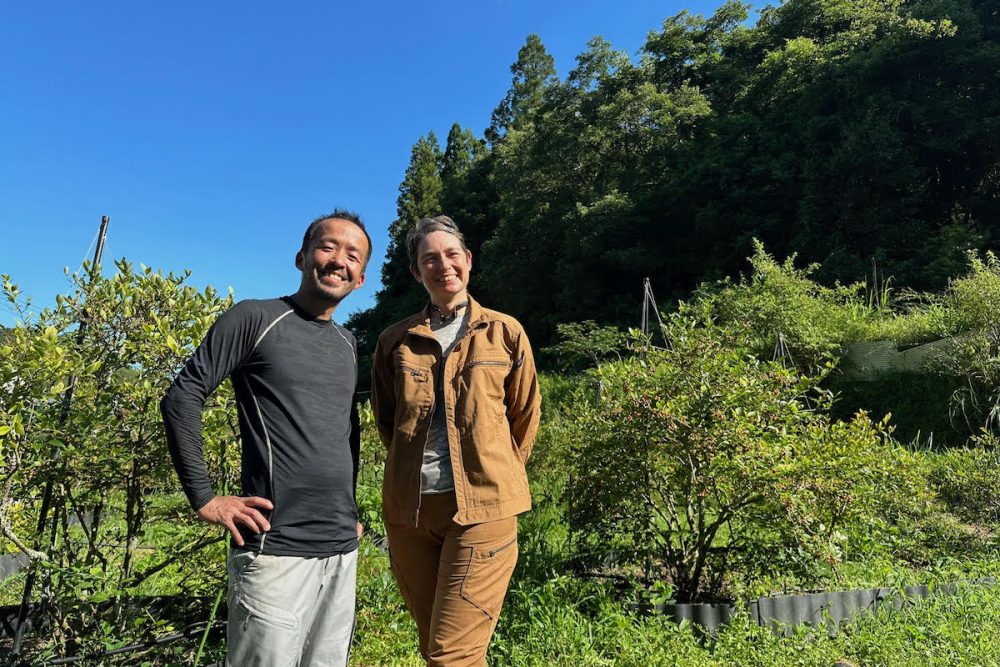Breakthrough in Heart Surgery: New Repair Patch Offers Hope for Patients
SYNFOLIUM, developed by a Japanese university, fabric producer, and textile company, uses warp knitting technology to promote healing after heart surgery.
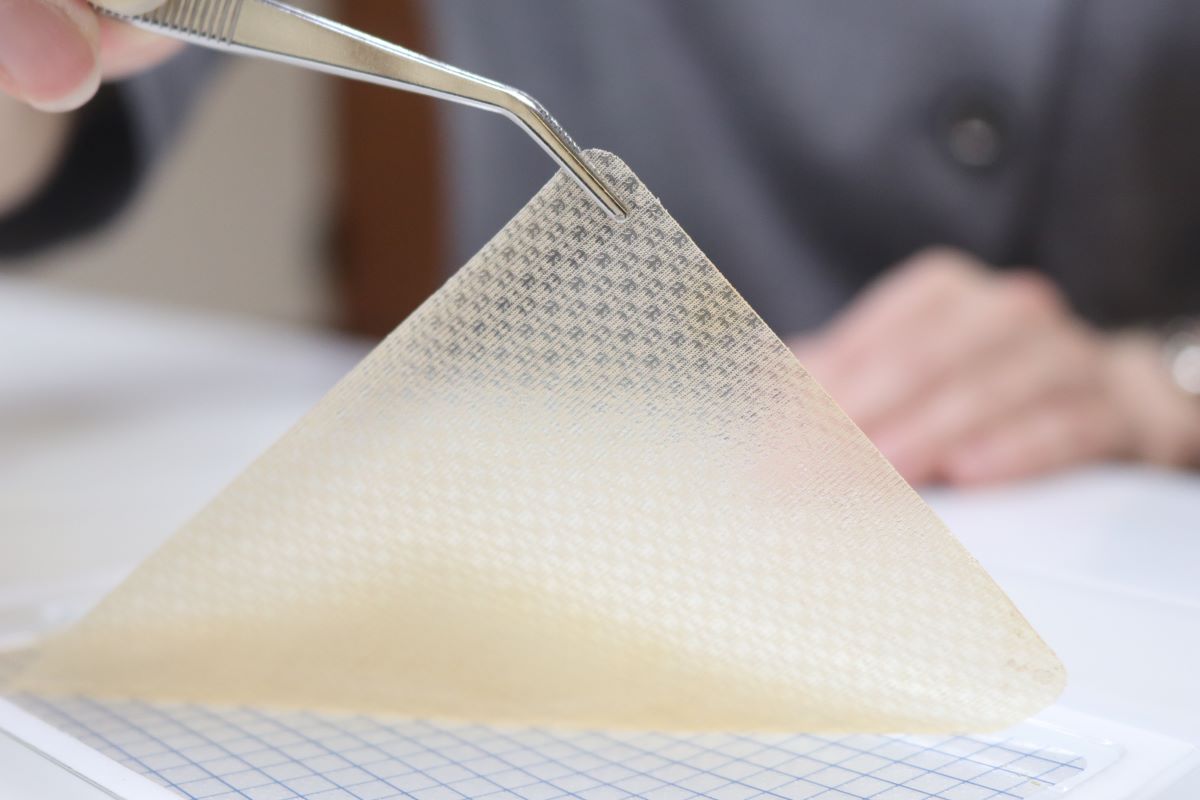
このページを 日本語 で読む
After more than a decade of collaboration, a medical device development project for heart surgery has finally achieved its goal. A major corporation, a small-town knitwear manufacturing factory in Fukui, and a university all cooperated on the initiative. The result is SYNFOLIUM, a patch for repairing hearts and blood vessels used in congenital heart disease surgeries.
Utilizing advanced warp knitting techniques, this innovation offers unparalleled elasticity and strength not found in off-the-shelf products. Because they stretch as the heart grows, these patches could eliminate the need for additional surgeries. Insurance coverage commenced on June 12, coinciding with the start of sales.
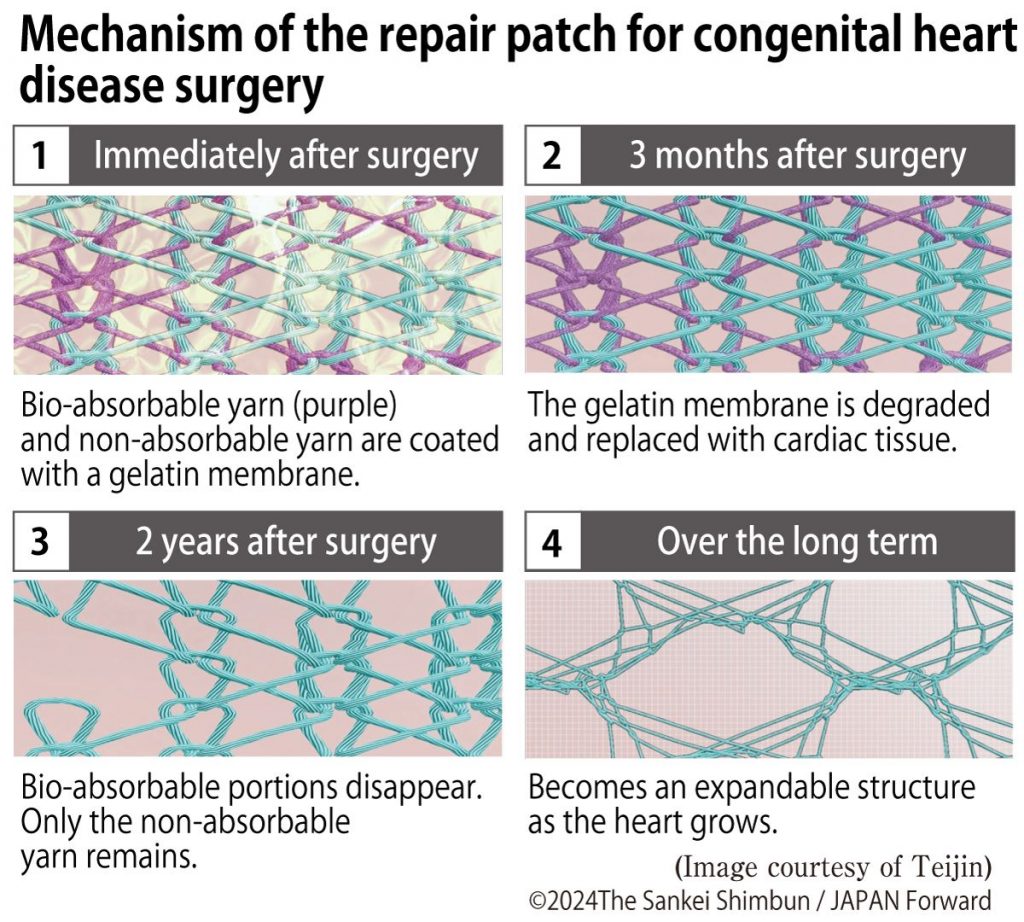
From Development to Official Approval
Fukui Tateami Co Ltd is a knit fabric producer in Fukui City, and Teijin Ltd is a leading textile company based in Osaka. Both companies collaborated with Osaka Medical and Pharmaceutical University in Takatsuki City, Osaka. Professor Shintaro Nemoto, a cardiovascular surgeon at the university, recognized Fukui Tateami's technical capabilities and suggested working together.
Research began in 2014 and culminated in July 2023, when the Ministry of Health, Labour, and Welfare officially approved manufacturing and sales.
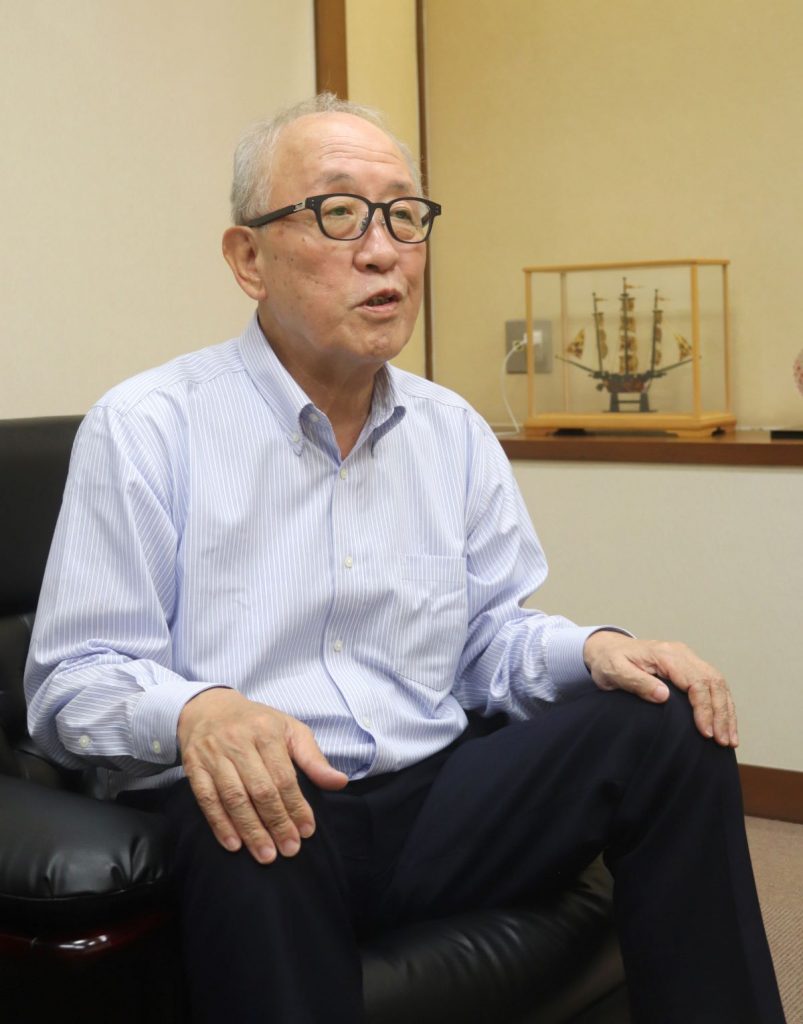
Revolutionizing Pediatric Cardiac Treatment
Babies born with congenital heart conditions are estimated to occur in about one out of every hundred births. To expand narrowed blood vessels or close ventricle defects, surgeons implant patches during surgery. Previously, these patches were made from animal-derived or synthetic materials lacking elasticity, necessitating additional surgeries as the child grows. This has placed a significant burden on both the affected individuals and their caregivers.
SYNOFOLIUM incorporates two types of yarns to weave the fabric, which is then entirely covered with gelatin. Over time, the gelatin is replaced by tissue self-organization, and one of the yarns is absorbed into the body. The remaining thread, influenced by the absorption of the other, loosens and expands the fabric, enabling it to adjust to the heart's growth.
Clinical trials were conducted on 34 patients ranging from newborns to adults between 2019 and 2022. No life-threatening cases or instances requiring reoperation due to patch malfunctions were observed within one year after surgery.
Fukui Tateami's development of SYNOFOLIUM drew inspiration from Jun Ikeido's novel Shitamachi Rocket 2: The Gaudi Project (Shogakukan Inc, 2015). Set in Tokyo, the novel portrays a small-town factory's dedication to creating medical devices for heart disease patients.
Warp Knitting Technology
"I initially thought this project would take far longer," Fukui Tateami President Yoshihide Takagi commented. "But it was over before I knew it. I'm thrilled because I truly believe this will save children," he smiled. Years of refined technical skills at the company laid the foundation for this achievement.
This is not the first time the company has ventured into the production of medical devices.
About a decade ago, the company achieved a breakthrough in warp knitting. This success led to their collaboration with a group from Tokyo University of Agriculture and Technology to begin developing silk-based artificial blood vessels. Their work significantly advanced the practical application of small-diameter artificial blood vessels, attracting considerable attention. It was this achievement that caught Nemoto's attention.
The conventional patches used in surgeries for congenital heart disease lack elasticity, often necessitating further operations after implantation. Costs can amount to millions of yen, with guardians of patients under six responsible for bearing 20% of the expenses. Although mitigated through high-cost medical care benefits, the financial burden on patients remains significant. That is why there has been a significant demand for patches that can accommodate the growth of the heart.
Responsibility and Hope
"When I initially heard Professor Nemoto's idea for SYNFOLIUM, the prospect was quite daunting," Takagi explained. "Product flaws could have life-threatening consequences, so the weight of responsibility made me hesitate."
During the development stage, Takagi witnessed surgery on a child with congenital heart disease performed by Professor Nemoto.
Typically, heart surgeries involve using a heart-lung machine, temporarily stopping the heart during the procedure. As the surgery commenced, the heartbeat monitor shifted from waveforms to a flat line. In the final hours of the surgery, they proceeded to restart the heart. Takagi watched the monitor intently.
"'Come on, Come on.' That's what I kept thinking," Takagi reflects. Slowly, the heart, as small as a ping-pong ball, began beating again. Takagi cried uncontrollably as the tiny body's heartbeat shifted from a flat line to a waveform. "At that moment, I felt with all my heart that we had to make this project succeed," Takagi says.
Maximizing Japan's Technical Strengths
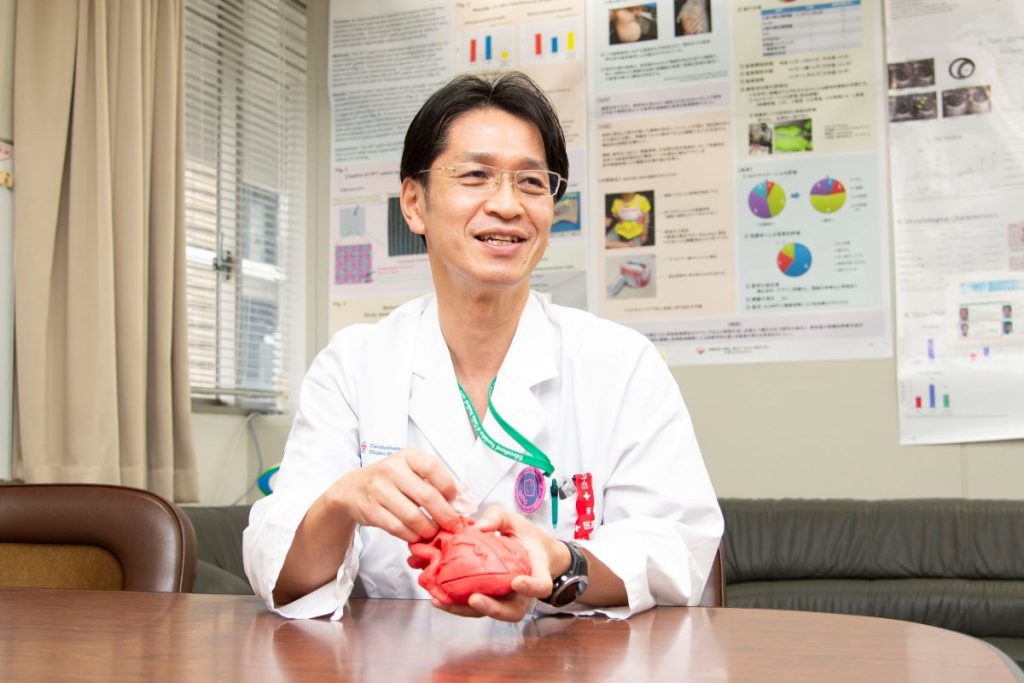
Achieving the patch's intricate structure was challenging, requiring numerous discussions among technical staff and Nemoto. Looking back, Nemoto reminisces, "We would occasionally brainstorm every possible approach over drinks, working together towards our goal."
Once the fabric was completed, Teijin also joined the fold. Teijin contributed to the development of the material that covers the knitted fabric.
While coating alone would have been simple, it would have been counterproductive if it impeded the fabric's elasticity. After testing countless materials, they eventually selected gelatin. "The answer is simple once you find it, but getting there was challenging," remarked the company's development manager.
Following that, it required several years to confirm its effectiveness and conduct further assessments.
Nemoto thanked the two companies, acknowledging, "The pediatric sector has a small market and isn't lucrative. Yet they still collaborated with us." Throughout the project, Takagi stressed, "I've consistently reminded our employees of our mission. Japan's technical capabilities remain robust, and I'm committed to maximizing them."
This article was first published on JAPAN Forward on June 26, 2024.
このページを 日本語 で読む









